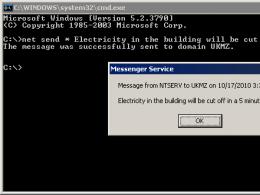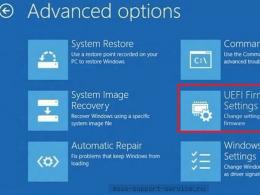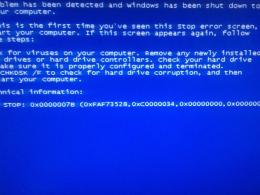Why the phone does not see the wifi router. Why android does not see WiFi
13.06.2017
Without connection to world wide web smartphone remains just a tool for calls and SMS. But to download applications and work with them, you need a stable Internet connection. In a modern city, the most convenient way to get online is to connect to Wi-Fi, given that a free hotspot can be found not only in cafes, but also in parks and even in transport.
But what to do if the phone does not see the WiFi router, how to deal with it? Let's discuss possible solutions this problem in this article, also answering frequently asked question why the phone does not connect to the laptop's WiFi.
Why Android Smartphone Can't Connect to Wi-Fi
Although connecting a smartphone to Wi-Fi is quite simple, not everyone knows how to do it. And the owners mobile devices on the Android based every now and then questions arise why the phone does not connect to wifi or how to set up a wi-fi access point from the phone.

There may be several reasons why the phone does not connect to Wi-Fi on the street or at home:
- The router is stuck.
- The user entered the wrong password for accessing the Internet.
- The network is down or not functioning properly.
- The type of protection is incorrectly set in the router.
- Smartphone does not support wifi standards home router.
- IN home network The number of connected devices has been exceeded.
The phone does not see the router and Wi-Fi

The latest versions of Android are good because most special functions are automatically configured on the smartphone. The user only needs to press a button in the menu. If the phone is not too far from the router (and in this case, the gadget simply cannot catch the router's signal), the reason why the mobile device does not catch Wi-Fi should be looked for in the settings of the router itself.
We will show you how to check your router settings with an example. Asus router RT-N11P. In general, the settings of the routers are similar to each other, only the type of interface differs:
- IN address bar browser, enter the login address, for example, http://192.168.0.50 . Usually the address is indicated on the router itself or in the user manual.
- Specify admin as login and password. Please note: if you changed access when you first set up the router, you need to enter the data you specified.
- Make sure internet is connected. Several indicators signal this at once.
- Check the connection channel in advanced Wi-Fi settings. In the drop-down menu should be the item "Auto".


Reboot your router and try connecting your smartphone to Wi-Fi again.
How to set up a Wi-Fi hotspot on a laptop
To set up a Wi-Fi pairing between a smartphone and a laptop, it is not enough just to create a connection. It is extremely important to open the hotspot and discover devices. Very often, an Android smartphone does not see Wi-Fi due to the fact that the user has not fully configured the access point on the laptop.
- Sign in to the Network and Sharing Center.
- Select "Change advanced sharing settings".
- Turn on network discovery.
- Allow general access to files and printers.
- Disable network access with password protection.
- Save your changes.
How to make a router from a phone?
It often happens that even with a configured router it is impossible to connect to the Internet. This is usually due to problems on the communication line or during technical work produced by the provider. In this case, the source wifi signal can turn your own phone. You will find step by step instructions in our article.
Why does the Android phone not see the WiFi network from the laptop? This question often worries users. It is worth noting that distributing WiFi from a laptop, you get the same network as using a regular router. Therefore, the principle of its operation and settings is practically the same.
The only difference is that the router has more extensive and flexible parameters. In addition, you should know that you can organize an access point on a laptop different ways. One of them is the organization of the "Computer-computer" connection. In this case, your phone or tablet simply will not detect the network, since it is designed exclusively for computers.
Why Android does not see the WiFi network
There can be many reasons for this. If you organized a network using a router, then first of all you will need to enter the parameters, since all settings are made exclusively in the router. If the network was created on a laptop, then you should go to the operating system settings. As you can see, nothing needs to be configured on the tablet or smartphone itself.
The fact is that operating system Android is made in such a way that all the settings are already entered and there is simply nothing for users to configure. Everything is extremely simple. Therefore, we will look for the cause of the error directly in the access point itself (in a router or laptop). So, let's look at both options in more detail.
Why Android may not see the WiFi network (video)
Setting up a router
Very often, Android does not see the WiFi network due to incorrect router settings. Therefore, let's enter the router's menu and make all the necessary amendments. To do this, connect to an access point on a laptop or desktop PC. Open your favorite browser and write the IP of the router in the address bar. How to recognize him. As a rule, there is a sticker with all the data on the device itself. But if she's not there, necessary information can be found in the user manual. If there is no instruction, then do the following.
Press both Windows + R keys at the same time. In the window that appears, write CMD and click "OK". Thus we launched command line. Here you can see detailed information about the network to which the computer is connected. To do this, write ipconfig and press "Enter". After that, you will see the connection details. Here you need to find the line "Main Gateway". It is this address that we need to register in the browser. As a rule, most routers have such an IP - 192.168.0.1 (but there are also such, 192.168.1.1) It all depends on the model.
How to easily find out the IP address of a WiFi router (video)
So, after we have registered the desired address, press "Enter". After that, we need to enter a username and password. Here we write admin, admin, respectively. If you changed these values, then enter your data.
Everything, we got into the parameters of the router. The interface may differ depending on the model and brand of the device. We will analyze further actions using the D-LinkDir-615 router as an example. But it is worth noting that all access points work on the same principle, so their configuration is practically the same. The difference lies only in the design of the menu and the name of some sections.
First of all, you should click on the "Advanced Settings" button at the bottom of the screen. After that, additional sections will appear. We are interested in an item called "WiFi". Here we enter the main settings.
First, check if the wireless connection is enabled. In the "Enable wireless connection» must be checked. If it is not there, then we set it, save the parameters and check if Android finds our network.
If the problem is not solved, then we move on. Now you should check the channel. Try to change it. Here it is recommended to set the value to "Auto" (automatic detection). A little lower you need to select the network mode. It is recommended to select 802.11 B\G\Nmixed from the list. This is a mixed mode, in which devices that support different WiFi standards connections.
Now find the line "Hide hotspot". This feature hides your network. Because of this, devices simply cannot detect it. In this case, the connection to the router must be created manually. If a checkmark is checked here, then uncheck it, save the settings, restart the router and try to connect your smartphone or tablet to the network again. This completes the router setup.
Why Android won't connect to Wi-Fi: Video
Setting up a virtual hotspot on a laptop for network discovery
A very common question is why Android does not see the WiFi network created on the laptop.
The fact is that it is not enough just to create a virtual access point. After that, you should open access to it and enable discovery.
This is done simply. First we need to enter the network control center. To open the tool we need, find the network icon in the tray (in the lower right corner of the desktop). Click on it right click mouse and in the menu that appears, select the desired item.
A menu will open in which you should enter the item "Change advanced sharing settings". Here you just need to enable network discovery and allow file and printer sharing. In addition, at the very bottom of the menu, you must disable network access with password protection.
Everything, this setup is completed. Try connecting your Android to the network again. It must also be remembered that if you use a laptop as an access point, then the range of such a network is lower than that of a router. This is because laptops use less powerful antennas.
It is worth noting that wifi antenna The adapter in a smartphone and tablet is even weaker than in a laptop. This means that in some cases, Android may not see the networks as a result of being too far from the signal source.
For example, on a laptop, the signal level is about 20% (2 sticks), and the smartphone does not see at all in the same place available connections. The solution to this problem is to simply move closer to the router. Alternatively, try moving the router closer to the center of the room and placing it higher so that the signal can cover a larger area.
What to do if Wi-Fi is connected, but the Internet does not work on Android: Video
If Android does not see the WiFi network, the first step is to understand which side the problem is: on the device that distributes the wireless network (modem / router), or on your Android phone / tablet.
This article is suitable for all brands that produce phones on Android 9/8/7/6: Samsung, HTC, Lenovo, LG, Sony, ZTE, Huawei, Meizu, Fly, Alcatel, Xiaomi, Nokia and others. We are not responsible for your actions.
Determining the source of the problem
The first step is to determine if Android sees other Wi-Fi networks. Try to distribute the network from a laptop, from an iPhone or another phone, go to a public place with free Wi-Fi.
If there were no problems with finding other points, there is definitely a problem in the network, which. If the device does not catch any points, although other phones show their presence, then look for problems in the system and the hardware component.
Android does not see any Wi-Fi networks
If the device does not detect wireless points, although I saw them before without problems, make sure that there are no errors in the system and that the module is working.
- Open settings.
- In field " Wireless networks» Slide the Wi-FI switch to the On position.
- Start a network search.
- open additional functions and check "Always look for networks".
In the settings of the latest versions of Android, there is an option to reset the network settings. With it, you can fix system failures without resetting other device settings and without deleting information from memory.
- Settings
- User and Archiving
- Backup and Reset
- Reset network settings
If you have problems connecting to Wi-Fi after updating or flashing the device, then you need to roll back to the last stable working android version. Use official or verified custom builds for firmware, then the question is what to do with the next system error, will occur much less frequently.
The worst thing that can happen to a phone or tablet is hardware failure. If you suspect that a module wireless communication out of order, please contact service center for diagnostics and component replacement.
Troubleshooting
Before you start serious hardware diagnostics, perform a few simple actions:
- Make sure the network you want to connect to really exists. To do this, see if other devices detect it.
- Go to android settings. Disable and enable Wi-Fi.
- Restart your phone/tablet.
- Reboot your router if you have access to it. Unplug it, wait 10-20 seconds and plug it back in.
- Bring the device closer to the router. The signal may be obstructed by obstacles or the distance may be too great.
- Check the saved password again. If you changed the password in the router settings, then it could be saved in the connection settings on Android.
That's all you can do on an Android device. If after performing these steps the network does not appear, proceed to check and configure the signal source.
Setting up a router
If you have access to the router, then check its settings. What can help:
- Turn on Wi-Fi in settings.
- Change network name (SSID).
- Wi-Fi change channel.
- Checking the network operation mode.
- Removing restrictions on the number of connected devices.
- Setting up the built-in firewall.
Router settings are different, but all have a Wi-Fi section. See again how to set up Wi-Fi on specific model router and make sure you have the correct settings.
 Increase
Increase If the message "
Wi-Fi has long and firmly entered the lives of users mobile internet. Once a smartphone, tablet or laptop refuses to connect to the router - the owner of these devices will have to figure out why this happened and how to fix it.
The main reasons that the gadget does not see the Wi-Fi network
The smartphone or tablet does not see the Wi-Fi network because:
- Lost power on the router
- the router itself is out of order (physically, or "freezes");
- Wi-Fi communication is not enabled (on a new device, or the router was previously used as a wired router);
- Wi-Fi connection is not enabled on the smartphone or tablet;
- failures or viruses in the operating system of the gadget.
- The router does not broadcast the name of its network.
As you can see, the problem lies both in the router and in the gadget or PC itself. Both devices need to be checked.
Checking and reconfiguring the router
Often, checking the operation of a Wi-Fi network does not begin with a PC or gadget, but with a router. The reason is the simultaneous loss of access to the Network on all devices connected to it.
How to restart the router
As an example - TP-Link routers.
Any router can be restarted by unplugging the power adapter for half a minute.
It's convenient - no need to turn off the power adapter
Some routers, such as the TP-Link brand, have a power button on the back (not to be confused with a reset button in a tiny hole, pressed with a paperclip or toothpick).
Reset router settings to factory defaults
Resetting the router allows you to roll back unwanted changes made by you unknowingly, or (less often) by the actions of viruses that got into the firmware or on the PC / gadget.

Reset can also be done using the button hidden from accidental pressing into a special hole.
Schematic placement of the reset button on most routers
Any point is required, for example, a paper clip bent from one end. After resetting the router, try reconnecting to your wireless network, the Internet should work.
Optimizing router settings
Choosing settings that do not cause headaches when working on the Web from any PC or gadget is a task that any user can do.
Checking Your Router's Security Settings
As an example - ZyXEL routers. Security is the first priority when setting up "wireless", do the following.

The router will restart, try connecting to your network.
Changing the bandwidth
Changing the band in the 2.4 GHz band is an act of desperation when other settings have failed. But the user will pay for this by the fact that half of his (and neighboring) devices simply will not be able to connect. As an example - ZTE router F660.

Wi-Fi network settings (excluding encryption) in ZTE routers look impressive.
For example, power wifi transmitter allows you to limit the coverage radius to one or two rooms - by converting the percentage of the radius of the coverage area into milliwatts, issued in wifi antenna, we get 3–100 mW. The percentages shown in the settings are based on the average coverage area of an apartment building or office building. An indication of 10% will allow you not to interfere with neighbors on the entrance / floor / street (“not flying” the signal of your router into the neighboring territory).
Exhaustive settings in the router can also be achieved in a “gray” way, “bay” as a firmware instead of a standard firmware OpenWRT firmware(DD-WRT) - free software for routers of Chinese manufacturers.
OpenWRT allows, for example, to configure work with "exotic" models of 3G / 4G modems that are not available in regular D-Link firmware, TP-Link and ZyXEL. You can also fine-tune the bypass of the tethering restriction of Yota and other operators, integrate the torrent client and Tor encryption, and even connect external drive without a PC / gadget - to save downloadable content on it. This is achieved by installing additional scripts in the flash memory of the router that work with the main OpenWRT software - unlike the "native" firmware of the router, where such frauds are not provided ("native" firmware is already assembled).
Video: switching the Wi-Fi channel in TP-Link routers
Testing Wi-Fi on Android Smartphones and Tablets
Despite the fact that tablets and smartphones, unlike PCs and laptops, where the Wi-Fi module is often removable / external, do not require complex diagnostics, the problem may lie in the gadget itself, and not only in the router and / or modems (if An ADSL/ONT modem or a 3G/4G USB modem works in conjunction with the router). This is true for the Apple iPhone/iPad/iPod/Watch, which are discussed below, and for obsolete gadgets based on Symbian, BlackberryOS, PalmOS and their other modern counterparts.
Checking connection to a known network in Android
First, give the command "Settings - Wireless networks" and check if the flight mode is set - it blocks the operation of all radio transmitters of the gadget (with the exception of the GPS receiver).
Unlocked MTC-916 (ZTE Racer) and its wifi settings
Go to the Wi-Fi settings and select a network for which you know the key (for example, this is your ZTE MF90+ pocket router or similar). All routers (and gadgets / PCs operating in the Wi-Fi distributor mode) to which you connected) are signed as well-known networks.
If there is no connection, the main reason is the wrong password for the Wi-Fi network, with which the gadget saved this network in the list of known ones. Give the command "Network Information" (by pressing the menu button under the visible part of the sensor) - "Delete", then connect to the same network again.
Delete the settings to the router, then re-enter them
Another reason may be the freezing of the device itself due to the ingress of a virus or an advertising code that caused an overload of the processor and RAM in the gadget. Unlike the iPhone and other Apple gadgets, which are reliably protected from such sabotage, Android devices are reflashed for this very reason - any control is lost when it freezes, including the submenu with Wi-Fi settings.
Restarting an Android device
If an Android smartphone or tablet is so frozen that it is no longer controlled, and is not even able to restart its built-in Wi-Fi module, you can try restarting it from the power button by giving the “Reboot” command. IN latest versions when performance issues are detected, the operating room android system restarts automatically.
Try also to call a frozen smartphone. If the charge level was low before freezing, wait until the battery is completely discharged, calling the hung gadget again and again in case of call beeps - it happens that the 3G terminal in the smartphone receives calls and SMS, but the screen remains with a hung backlight, or is turned off. If the call fails (clicks and the answer "Subscriber unreachable" after one or more dialing attempts), remove the back cover, remove and reinsert the battery, turn on the smartphone. If the smartphone does not start, contact the service center or try to reflash the gadget yourself (if you are confident in your actions and have the necessary knowledge).
Reconfiguring an Android gadget
A new reconfiguration begins with resetting user data and OS settings. To avoid losing valuable files from the SD card, it is recommended to remove it. Depending on the gadget model, the microSD card slot is located next to the SIM cards and/or the hidden "Reset" button.

Drive C: (gadget flash memory) will be cleared ( custom folders Android).
Perhaps at full reset Android will be removed Root access - gadget "administrator" privileges implemented third party applications KingRoot type. In doing so, you will lose full access to system processes, services and hidden (including system libraries and drivers) folders and Android files. With a new setting, Root-rights will need to be re-installed.
Now do the following.
- Go to the already familiar Wi-Fi submenu and reconnect to any of the networks you know.
- Once the internet is up, go to Google Play and reinstall the apps you previously used.
About the work of the Internet over Wi-Fi say attempts to update Android background services preinstalled programs(these updates are enabled by default) and send some information about the gadget to Google.
Video: air scanning on Wi-Fi Analyzer in Android
Solving Wi-Fi Problems on iPhone
operating room iOS system for iPhone, iPad, iPod and Apple Watch is almost identical. Everything that is said about the iPhone is true for other Apple gadgets.
Restarting the Wi-Fi adapter in iOS
Operating Apple systems very reliable and high-performance - the company is scrupulous in terms of the speed of its gadgets and stops updating iOS on outdated models of mobile devices as soon as comprehensive checks show that these devices have exhausted themselves and will freeze with the next iOS update. So, support for the iPhone 4s has been discontinued since August 2016 - the last current version is 9.3.5 ("top ten" can be installed only by hacker methods). Therefore, the settings, in particular, Wi-Fi, should not freeze.

The connection should work.
Reset network settings on iPhone
- Give the command "Settings - General - Reset".
Choose to reset iPhone data and settings
- Select reset network settings.
Choose to reset network settings
- Confirm the deletion of network data.
Confirm the action by clicking the reset networks information button
Information about the settings of operators, Wi-Fi networks and information about the one configured for distribution Internet iPhone(access point mode) will be erased.
Restart, "break" iPhone
"Break", or cleaning random access memory iPhone is performed as follows.
- Press and hold the iPhone's "Power" button until the software shutdown slider appears.
- Release "Power", press and hold the "Home" button (on iPhone models, where it is) for a few seconds.
The shutdown screen will change back to the iOS desktop, and the buffer (RAM) will be cleared. If you have left running applications, then they will reload the data on which your work has paused.
Restart (excluding the "hard" reboot - short alternate pressing of the volume keys and holding the "Power" button until the gadget's screen goes blank) is turning off the iPhone (the "Turn off" option on the slider) and then turning it on.
Unfortunately, iOS does not have "Restart" and "ReSpring" sliders ( safe mode without background and animations, launched only if there is a jailbreak) - be content with what you have.
Other Reasons for No Wi-Fi Connection
The reasons for the lack of connection to the router are as follows.
- The coverage area is too large - the device sees the Wi-Fi router / hotspot / BS, but itself cannot “reach” it. This can be achieved only with the use of a second router in repeater mode, with a directional antenna (often self-made) directed towards the original repeater.
- The owner changed the password/encryption, made the network private/restricted. The old settings are now useless.
- There is a connection, but the provider’s page appears with information about non-payment of the tariff, exhaustion of high-speed traffic, or the need to view ads to gain access to the Network for so many minutes, hours or all day, or confirmation of low speed (if any).
If nothing helped
The problem probably has not software, but hardware causes.
Malfunction of the router, USB modem or Wi-Fi module
Breakdown breakage strife. It depends on how maintainable the device is.
- Microchip failure. The router once turns off forever - for example, if it was located under the windowsill, and water from a flower pot spilled onto it, which closed the outputs of the microcircuits.
- Frequent overheating of the router: weak signals from connected devices and cellular networks, critical dustiness (location of the router in a dirty and unattended place in the room).
- Minor breakdown - drying out or explosion of one of the electrolytic capacitors on printed circuit board; here you need to replace it, because it is broken circuit diagram device - it will not start, or it will be unstable.
- The router worked for many years, but recently it began to “fail” and freeze - it was increasingly rebooted abnormally, and the flash memory “died”. Chinese technology, especially cheap ones, gets old and wears out faster than top models well-known companies such as Apple or Samsung.
- Accidental breakdown of the router by static electricity when it is opened, or from overvoltage in the network. It happens when not 220 volts is supplied to the power grid, but the interfacial voltage is 380, but such cases are vanishingly small.
- Connecting the “wrong” power adapter to the router: instead of a 9-volt one, the user accidentally connects 19 volts (for example, from a laptop). IN best case the stabilizer on the router board explodes, in its absence, the entire “signet” burns out.
If the router model is expensive, you can try to bring it back to life by giving it either to a computer or “gadget” SC, or to an uncertified repair shop household appliances and electronics. USB modems and external modules Wi-Fi where more difficult to repair due to their compactness and "jewelry" assembly.
Mobile device failure
Everything that was said above about routers is also true for gadgets and laptops, but there are differences. So, Apple technology, despite the "advanced" protection against the motley "Kulibins", with strict observance step by step instructions opens up with a bang. The point is small - careful handling of cables and removing the battery from the glue (if necessary, replacing it).
Many Android tablets and smartphones, especially below average prices, are even easier to disassemble. Apart from a few screws and primitive "hook" type locks, nothing holds the front and back of the case together, and the "signet" is generally set on a large drop of glue and can be removed easily; the battery is generally removed in a second, as in Nokia smartphones 2000s release. These are, for example, tablets Archos, ZTE smartphones and Huawei.
In the event of a breakdown of microcircuits (3G/4G/Bluetooth/Wi-Fi/GPS radio modules, CPU, RAM, flash memory, Lightning/microUSB interface) motherboard is considered unusable, because, again, the finest assembly does not allow it to be “raised from the ruins”. Almost always bought new gadget- most often previous iPhone model on sale, or similar technical specifications android model. However, if the speakers, microphone, SIM and microSD slots are out of order, the case is cracked, the sensor is broken, this component can be changed. All replacements of failed components and components are best done in the SC.
In most cases, if the Wi-Fi connection is lost, you do not need to run to the service center. Most often, problems are of a software nature, and even flashing the device should not scare you. Everything is solved.
Quite often, people are interested in the question of why the phone does not find the WI-FI of the laptop. Its settings are no different from the router, since their work is similar in principle.
Their difference lies only in the fact that the router has the widest parameters. Also, the access point can be configured only for communication between computers. Thus, any other device simply will not see the network.
Why WIFI network does not see Android?
There are plenty of reasons for this. If the network is through a router, then you need to go into the settings, if through a laptop, then into the OS settings, while on another device there is no need for settings.
This is because the settings in Android are automatic. It's all pretty simple. That is why the reason should be considered in the router or laptop.
Settings options:
Most of the time the error is quite simple. It's all about wrong settings. In order to correct it, it is necessary to change and make some amendments. It is important to register the IP of the computer in any convenient browser.
IP can be found on a sticker with all the data about the laptop, if there is none, then just look at the user manual or follow the following steps:
Press at the same time Windows buttons and R. A window will appear on the screen in which you need to register CMD, which will launch the command line after clicking "OK".
Here you can see all the necessary information. By writing ipconfig, it will be possible to view the connection. In the column "Main gateway" there will be information that should be entered in the browser.
Next, you need to enter the data: login and password. Basically, both fields should be written "admin", this is the initial data. If they have been changed, you must make your own. Thus, the entrance to the router is carried out.
All settings depend on the model, but they look about the same. Sections and item names may vary slightly.
In order to enter additional options, you should click "Advanced settings". You need to select WI-FI and find the basic settings.
First of all, you need to check the connection is enabled, that is, the presence of a checkmark in the desired window with saving the parameters. After that, you should check the location of WI-FI.
router
Need to check the channel and, if necessary, replace it. You should also set automatic detection. Next, select a mixed network. This will allow you to see WI-FI not only for computers, but also for other devices that support WI-FI.






